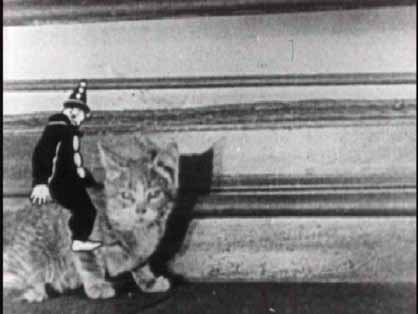Max Fleischer – Animation Legend Out of the Inkwell

From the earliest days of animation, Max Fleischer and his brother Dave were in direct competition with Walt and Roy Disney. His studio made the first sound cartoons in 1924 but over the next two decades they gradually lost ground to Disney. Disney’s Snowwhite pushed Fleischer to produce their own full length feature which failed to make enough money to pay back the bank ending one of the most creative entertainment enterprises of the twentieth century.
The “Out of the Inkwell” DVD set, now widely available, shows some of the earliest animation methods used by the Fleischer Brothers on Koko the Clown. If you look at the animation of the 1920s, it isn’t smooth like the animation from the 1930s. Dave Fleischer was a performing clown and Max made a series of short movies with his brother dancing around in his clown costume. Fleisher used the individual frames of these movies to create the animation for Koko the Clown. The early Koko the Clown cartoons that mixed real people and animated creatures are the true antecedents of “Who Framed Roger Rabbit”.

Comments
3 Responses to “Max Fleischer – Animation Legend Out of the Inkwell”


I believe the DVD set you are referring to was produced by me. The title is MAX FLEISCHER’S FAMOUS OUT OF THE INKWELL. To be specific, it is available through my website, inkwellimagesink.com, Amazon, and E-Bay.
I’m not sure you have seen enough of the OUT OF THE INKWELL films to make the statement that the animation “is not a fluid as the works of the 1930s.” The fact that Fleischer application of the Rotoscope which made life-like animation possible is definately
fluid animation. While there were short cuts taken
when animating certain scenes, the overall impression
is quite impressive. It is beneficial to view the entire
set of programs to see the evolution of technique and style since the best period came after 1923.
As for the summary of Fleischer’s career, the failure of GULLIVER’S TRAVELS did not end the studio. GULLIVER made money. But the total production cost was driven over budget due to the relocation to Miami, Florida in 1938. And while it has been reported for decades that the escalating war in Europe cut off the foreign receipts, I as contacted by someone in Sweden who said that his parents met at a screening of GULLIVER in the spring of 1940. Paramount was “cooking the books” then. It was the failure of getting a release on the second feature, which came out two days before the bombing of Peal Harbor on December 7th, 1941 that is seen as being about the demise of Fleischer Studios, but this is not entirely correct either. While there was a loan out for the two pictures, they had a ten year term. Paramount called the loan because Max and Dave had abrigated the contract, giving Paramount the right to take over. At the same time, Paramount had a valuable property in POPEYE, and their motivation for the takeover was based on gaining the character license once the Fleischer license expired in 1942.
I believe the DVD set you are referring to was produced by me. The title is MAX FLEISCHER’S FAMOUS OUT OF THE INKWELL. To be specific, it is available through my website, inkwellimagesink.com, Amazon, and E-Bay. It has been on DVD for three years, and was previously released in part in VHS six years ago.
I’m not sure you have seen enough of the OUT OF THE INKWELL films to make the statement that the animation “is not a fluid as the 1930s.†The fact is that Fleischer’s application of the Rotoscope made life-like animation possible, and this is definately fluid animation. While there were short cuts taken
when animating certain scenes, the overall impression
is quite impressive. It is beneficial to view the entire
set of programs to see the evolution of technique and style since the best period came after 1923.
As for the summary of Fleischer’s career, the failure of GULLIVER’S TRAVELS alone did not end the studio. GULLIVER made money. But the total production cost was driven over budget due to the relocation to Miami, Florida in 1938. And while it has been reported for decades that the escalating war in Europe cut off the foreign receipts, I was contacted by someone in Sweden who said that his parents met at a screening of GULLIVER in the spring of 1940. Paramount was apparently “cooking the books†then. Fleischer’s continued debt to Paramount continued to grow because the earnings from the POPEYE cartoons were not coming to Fleischer as they should have, but were paid out to theaters as a “bonus” for showing the cartoons when this money are actually owed to Fleischer Studios. It was the failure of getting a release on the second feature, which came out two days before the bombing of Peal Harbor on December 7th, 1941 that is seen as bringing about the demise of Fleischer Studios, but this is not entirely correct either. While there was a loan out for the two pictures, they had a ten year term. Paramount called the loan because Max and Dave had abrigated the contract, giving Paramount the right to take over. At the same time, Paramount had a valuable property in POPEYE, and their motivation for the takeover was based on gaining the character license once the Fleischer rights expired in 1942.
I defer to the expert. Thank you for your post1